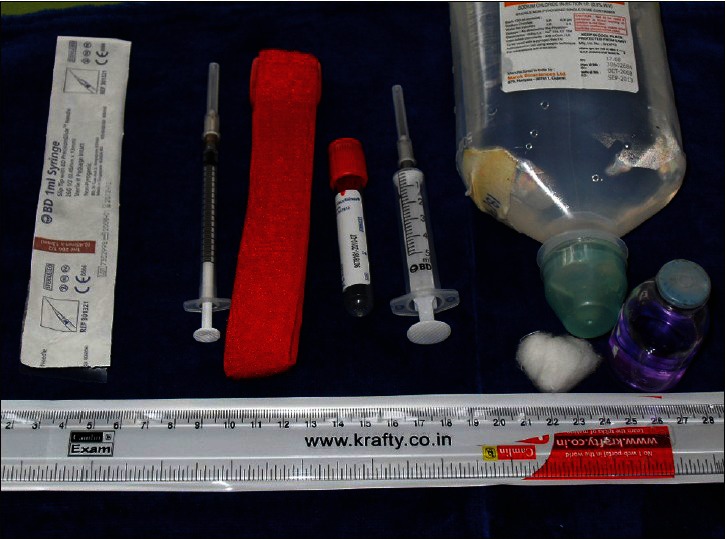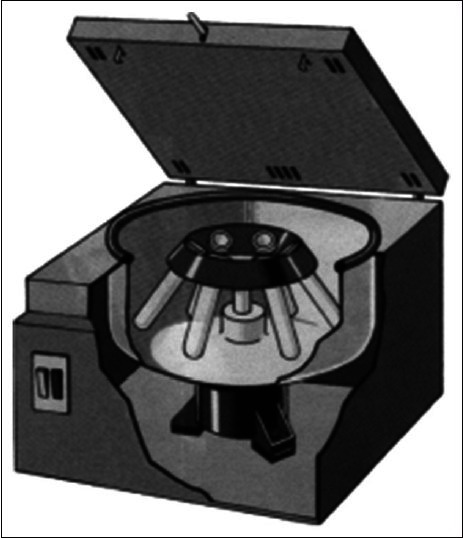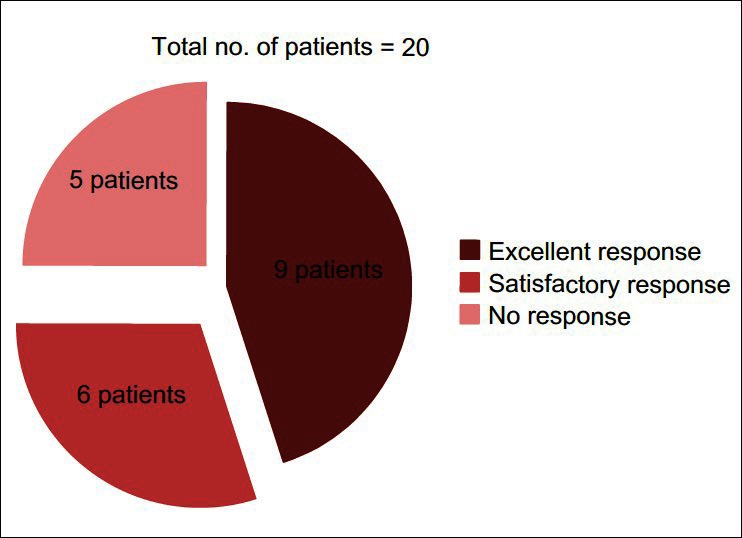Abstract
Autologous serum therapy is a promising therapy for treatment resistant urticaria. This is useful in developing countries as this is economical option. Minimum instruments like centrifuge, syringe and needles are required for the procedure.
Keywords: Centrifuge, intra muscular, injections
Introduction
Chronic urticaria (CU) is a very common distressing dermatosis to the patient as well as to the physician. It is characterized by spontaneously occurring, short-lived and itching wheal-and-flare-type skin reactions. CU is caused by autoreactive mechanisms in approximately 30-50% of all patients (autoreactive CU, arCU). arCU patients show an immediate hypersensitivity-type skin reaction after injection of their own serum. It has been shown that in some arCU patients, expression of autoantibodies directed against the high-affinity receptor for IgE (anti-FcɛRI) of mast cells or IgE (anti-IgE) is responsible for this phenomenon.
Repeated injections of autologous whole blood or autologous serum, a form of therapy also known as autohemotherapy, can be very effective in arCU patients. Auto-haemotherapy has been used in Indian medicine over the years in the treatment of a variety of diseases, including chronic inflammation, allergies, immunodeficiency, vascular diseases, osteoarthritis, atopic dermatitis[1] and various other skin disorders.[2]
Auto-haemotherapy can induce tolerisation/desensitisation of arCU patients to the proinflammatory signals expressed in their circulation.
A study by Staubach, et al.[3] has shown that auto-haemotherapy is effective in autologous serum skin test (ASST)-positive CU.
Multicentre, prospective, open-label trial of autologous serum therapy (AST) in patients with CU has shown it to be useful in India. This study found autologous serum therapy to be effective in a significant proportion of ASST(+) patients with CU. A smaller but still substantial number of ASST(−) patients also benefited from this treatment.[4,5] A randomised, single-blinded study done in Istanbul showed that autologous whole blood and autologous serum injections are equally effective as placebo injections.[6]
This economical therapy could be effective in treatment of resistant urticaria in patients who are ASST(+). We have found encouraging results in a small study. After taking written consent of patients, we started this therapy by giving weekly intramuscular injections of patientsʼ own serum (0.05 ml per kg body weight) in the gluteus muscle. Urticaria activity score (UAS) comes down within few weeks and patient's requirement of anti-histamine is also reduced remarkably. If there is no response after nine injections, treatment is discontinued. Sterile injection technique is recommended. Proper labeling and injection technique is advised to avoid transfer of infections. ASST(+) patients are benefited. The exact mechanism of this therapy is still not known.
The following instruments are required:
Figure 1.

Instruments used in the AST procedure
Figure 2.

Centrifuge machine
Procedure
Collect 5 cm3 of blood in a plain (red top) vacutainer.
Centrifuge at 3000 r.p.m. for 10 min. Use a 5 cm3 syringe and separate serum, and inject 2.5 ml of the serum deep intramuscularly into the gluteus muscle with a 22 no needle.
Repeat the procedure for 8 weeks; later, fortnightly injections are advised.
We gave AST to 20 ASST(+) patients (M: F = 12:8; age range = 20-45 years; duration of disease = 6 months to 5 years). There was excellent improvement seen in nine patients in terms of decrease in UAS and improved Dermatology Life Quality Index (DLQI), whereas six patients did not show satisfactory response and five patients showed no response [Figure 3].
Figure 3.

Pie diagram representing AST therapy results
The therapy could be useful in India as it is economical, cost-effective and does not involve use of various expensive drugs like cyclosporine and omalizumab. Large trials are needed to confirm the above findings.[6]
Footnotes
Source of Support: Nil
Conflict of Interest: Nil.
References
- 1.Pittler MH, Armstrong NC, Cox A, Collier PM, Hart A, Ernst E. Randomized, double-blind, placebo-controlled trial of autologous blood therapy for atopic dermatitis. Br J Dermatol. 2003;148:307–13. doi: 10.1046/j.1365-2133.2003.04921.x. [DOI] [PubMed] [Google Scholar]
- 2.Behl PN. Practice of Dermatology. 7th ed. New Delhi: Oxford Blackwell Scientific publications; 1990. Autohaemotherapy; p. 76. [Google Scholar]
- 3.Staubach P, Onnen K, Vonend A, Metz M, Siebenhaar F, Tschentscher I, et al. Autologous whole blood injections to patients with chronic urticaria and a positive autologous serum skin test: A placebo-controlled trial. Dermatology. 2006;212:150–9. doi: 10.1159/000090656. [DOI] [PubMed] [Google Scholar]
- 4.Bajaj AK, Saraswat A, Upadhyay A, Damisetty R, Dhar S. Autologous serum therapy in chronic urticaria: Old wine in a new bottle. Indian J Dermatol Venereol Leprol. 2008;74:109–13. doi: 10.4103/0378-6323.39691. [DOI] [PubMed] [Google Scholar]
- 5.Chopra A, Mamta, Chopra D. Autohaemotherapy in chronic urticaria. Indian J Dermatol Venereol Leprol. 1995;61:323–4. [PubMed] [Google Scholar]
- 6.Kocaturk E, Aktas S, Türkoğlu Z, Kavala M, Zindanci I, Koc M, et al. Autologous whole blood and autologous serum injections are equally effective as placebo injections in reducing disease activity in patients with chronic spontaneous urticaria: A placebo controlled, randomized, single-blind study. J Dermatolog Treat. 2012;23:465–71. doi: 10.3109/09546634.2011.593485. [DOI] [PubMed] [Google Scholar]


